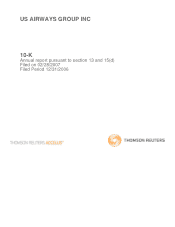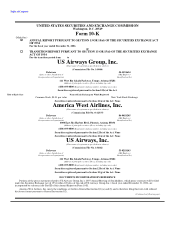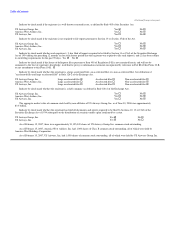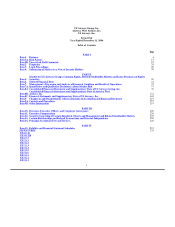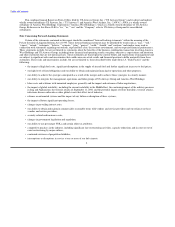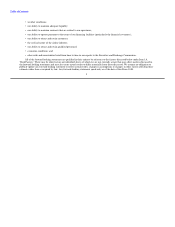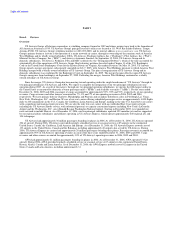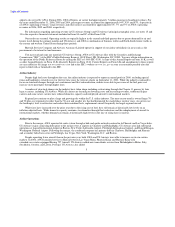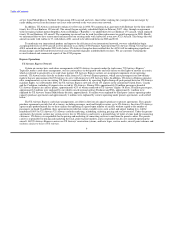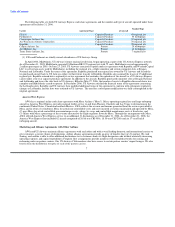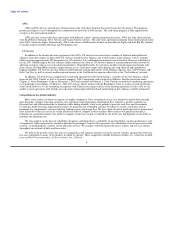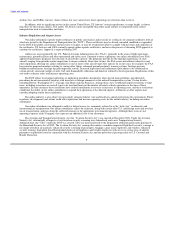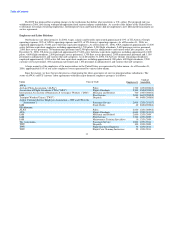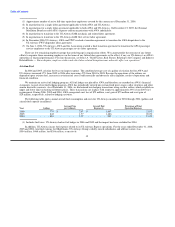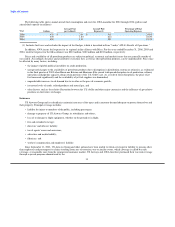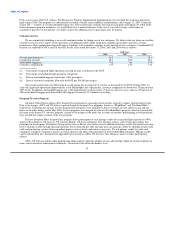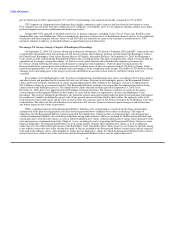US Airways 2006 Annual Report Download - page 11
Download and view the complete annual report
Please find page 11 of the 2006 US Airways annual report below. You can navigate through the pages in the report by either clicking on the pages listed below, or by using the keyword search tool below to find specific information within the annual report.
Table of Contents
AWA
AWA and US Airways entered into a broad system-wide code share program that started soon after the merger. This program
permits passengers to travel throughout the combined route networks of both carriers. The code share program is fully implemented
except in a few international markets.
AWA also has several code share agreements with different carriers. Among international carriers, AWA has code share relations
with ALIA/Royal Jordanian, EVA Airways and Virgin Atlantic Airways. The code share agreements primarily funnel international traffic
onto AWA's domestic flights. Domestically, AWA code shares with Hawaiian Airlines on intra-Hawaii flights and with Big Sky Airlines
to smaller markets in Idaho, Montana and Washington state.
US Airways
In addition to the broad code share agreement with AWA, US Airways has entered into a number of bilateral and multilateral
alliances with other airlines. In May 2004, US Airways joined the Star Alliance, the world's largest airline alliance, with 17 member
airlines serving approximately 855 destinations in 155 countries. Two additional international carriers based in China are scheduled to
join in 2007. Membership in the Star Alliance further enhances the value of US Airways' domestic and international route network by
allowing customers wide access to the global marketplace. Expanded benefits for customers include network expansion through code
share service, Dividend Miles benefits, airport lounge access, convenient single-ticket pricing, one-stop check-in and coordinated
baggage handling. US Airways also has bilateral marketing/code sharing agreements with Lufthansa, Spanair, bmi, TAP Portugal, and
Italy's Air One, as well as several smaller regional carriers in the Caribbean that operate collectively as the "GoCaribbean" network.
In addition, US Airways has comprehensive marketing agreements with United Airlines, a member of the Star Alliance, which
began in July 2002. United, as well as its parent company, UAL Corporation, and certain of its affiliates, filed for protection under
Chapter 11 of the Bankruptcy Code on December 9, 2002 and emerged on February 1, 2006. United assumed these marketing agreements
in its bankruptcy proceedings. On March 3, 2006, US Airways filed a motion with the Bankruptcy Court to assume revised agreements
with United; however, we are continuing to negotiate with United concerning revisions to the existing agreements. In the event we are
unable to reach agreement with United, our code share relationship with United and membership in Star Alliance could be terminated.
Competition in the Airline Industry
Most of the markets in which we operate are highly competitive. Price competition occurs on a market-by-market basis through
price discounts, changes in pricing structures, fare matching, target promotions and frequent flyer initiatives. Airlines typically use
discount fares and other promotions to stimulate traffic during normally slack travel periods to generate cash flow and to maximize
revenue per ASM. Discount and promotional fares are generally non-refundable and may be subject to various restrictions such as
minimum stay requirements, advance ticketing, limited seating and change fees. We have often elected to match discount or promotional
fares initiated by other air carriers in certain markets in order to compete in those markets. Most airlines will quickly match price
reductions in a particular market. Our ability to compete on the basis of price is limited by our fixed costs and depends on our ability to
maintain our operating costs.
We also compete on the basis of scheduling (frequency and flight times), availability of nonstop flights, on-time performance, type
of equipment, cabin configuration, amenities provided to passengers, frequent flyer programs, the automation of travel agent reservation
systems, on-board products, markets served and other services. We compete with both major full service airlines and low-cost airlines
throughout our network of hubs and focus cities.
We believe the growth of low-fare low-cost competition will continue. Recent years have seen the entrance and growth of low-fare
low-cost competitors in many of the markets in which we operate. These competitors include Southwest Airlines Co., which has steadily
increased East Coast operations, AirTran Airways, Inc., Frontier
8

